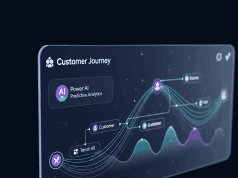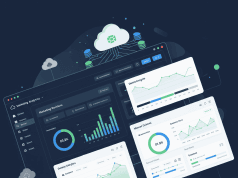In today’s competitive marketplace, understanding the customer journey is crucial for businesses aiming to enhance customer satisfaction and drive sales. The customer journey encompasses every interaction a consumer has with a brand, from the first point of contact to post-purchase evaluation. Mapping this journey allows businesses to optimize their strategies to meet customer needs effectively. One of the essential components of this process is employing the right analytics tools. This article explores key analytics tools that can assist businesses in mapping the customer journey.
Understanding the Customer Journey
The customer journey typically consists of several stages: awareness, consideration, decision, retention, and advocacy. By analyzing these stages, businesses can identify pain points, opportunities for improvement, and areas where they can add more value.
The Importance of Analytics in Customer Journey Mapping
Analytics plays a vital role in customer journey mapping because it provides data-driven insights. By leveraging analytics tools, businesses can:
- Understand Buyer Behavior: Grasp how customers move from one stage of the journey to another.
- Identify Trends: Recognize patterns in customer interactions and preferences.
- Measure Performance: Evaluate how effective different touchpoints and channels are in driving conversions.
- Enhance Personalization: Tailor marketing messages based on customer data and behavior.
Essential Analytics Tools for Mapping the Customer Journey
Here’s a rundown of essential tools that can streamline customer journey mapping:
1. Google Analytics
Overview: Google Analytics is a cornerstone for many businesses, providing comprehensive data on website traffic and user behavior.
Key Features:
- User Flow Visualization: Track how users navigate through your site, identifying where they drop off.
- Goal Tracking: Set up goals to understand which actions lead to conversions and how customers reach those goals.
- Audience Insights: Gain demographic and behavioral information about your users, helping to tailor marketing efforts.
2. Hotjar
Overview: Hotjar is a robust tool that combines heatmaps, session recordings, and surveys to provide a comprehensive view of user interactions.
Key Features:
- Heatmaps: Visualize where users click, scroll, and move on your website, offering insights into user engagement.
- Session Recordings: Watch actual user sessions to understand behaviors and frustrations.
- Surveys and Feedback: Collect direct feedback from users to understand their experience and needs.
3. Segment
Overview: Segment is a customer data platform that allows businesses to collect, unify, and activate customer data from multiple sources.
Key Features:
- Data Integration: Connect various analytics tools and databases to create a unified view of customer data.
- Real-Time Data: Access up-to-date customer behavior data across channels, enabling responsive marketing strategies.
- Personalization: Use data to deliver personalized experiences based on customer interactions across different platforms.
4. Adobe Experience Cloud
Overview: Adobe Experience Cloud offers a suite of tools designed to help businesses deliver personalized customer experiences.
Key Features:
- Journey Analytics: Analyze the customer journey across multiple touchpoints to understand performance and customer behavior.
- Content Optimization: Use A/B testing and personalization tools to refine messaging and content based on customer interactions.
- Attribution Modeling: Understand how different channels contribute to conversions, ensuring marketing spend is allocated effectively.
5. Pendo
Overview: Pendo helps businesses understand user engagement and retention through product analytics, allowing for improved user experiences.
Key Features:
- In-App Messaging: Communicate with users directly within your application, gaining feedback and guiding them through features.
- Feature Adoption Metrics: Analyze which features are most used and how they impact customer satisfaction and retention.
6. Qualtrics
Overview: Qualtrics specializes in experience management, providing tools to capture customer feedback and insights.
Key Features:
- Customer Experience Surveys: Gather feedback at various stages of the customer journey to understand pain points and opportunities.
- Data Analytics: Use advanced analytics to interpret survey data and make data-driven decisions.
Conclusion
Mapping the customer journey is a vital practice for businesses seeking to improve customer experiences and drive loyalty. Utilizing the right analytics tools not only reveals insights into customer behavior but also helps in making informed decisions to enhance the overall journey. By investing in these tools, businesses can better understand their customers, refine their strategies, and ultimately achieve greater success in a competitive landscape. As technology evolves, staying updated on analytics capabilities will continue to play a crucial role in shaping customer experiences.









